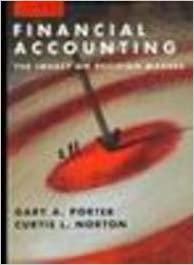Question
Please use the provided template to solve the problem and please show work / formula of working cell. Please use the provided template to solve
Please use the provided template to solve the problem and please show work / formula of working cell.
Please use the provided template to solve the problem and please show work / formula of working cell.
Please use the provided template to solve the problem and please show work / formula of working cell.
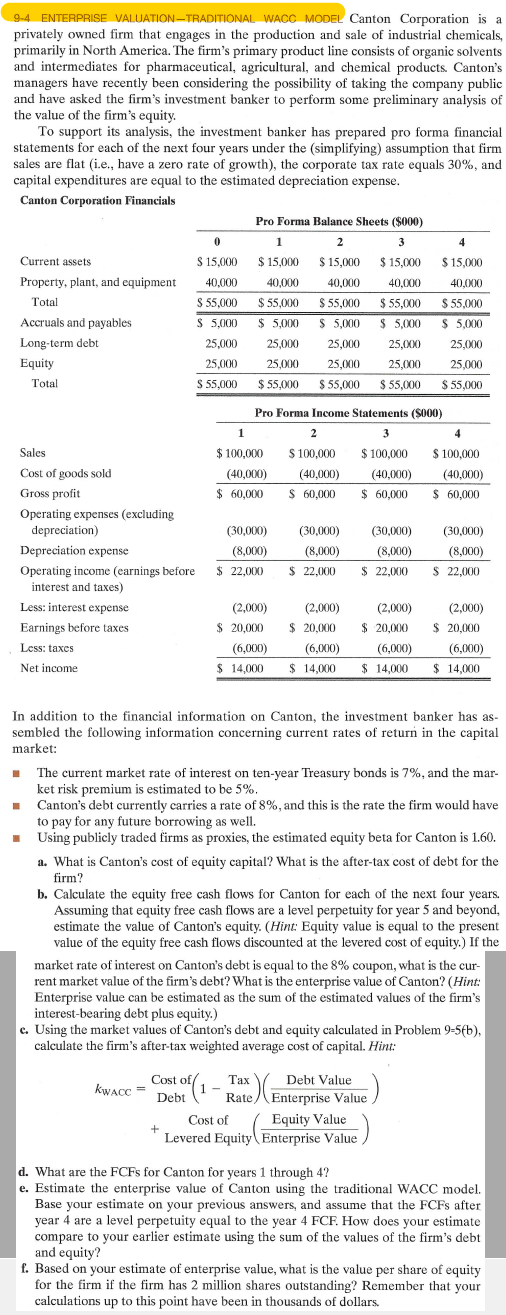
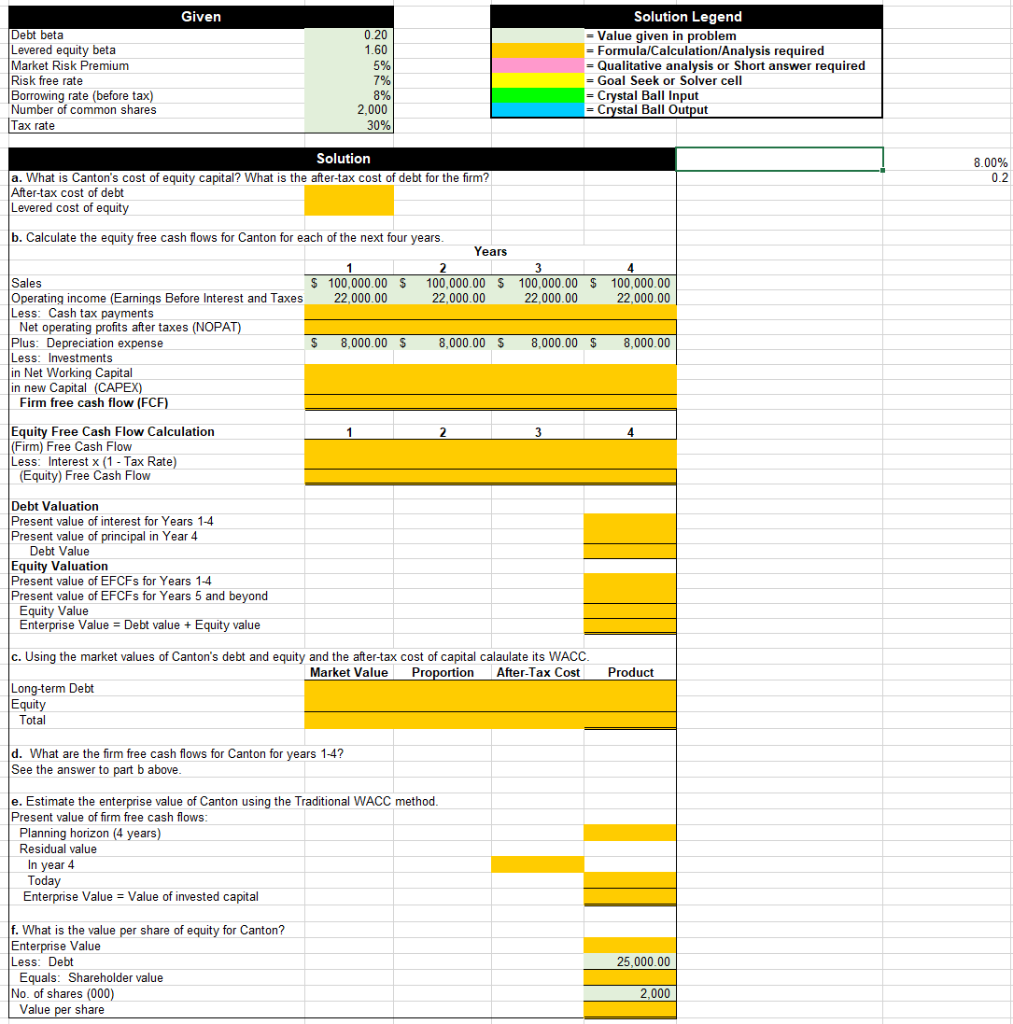
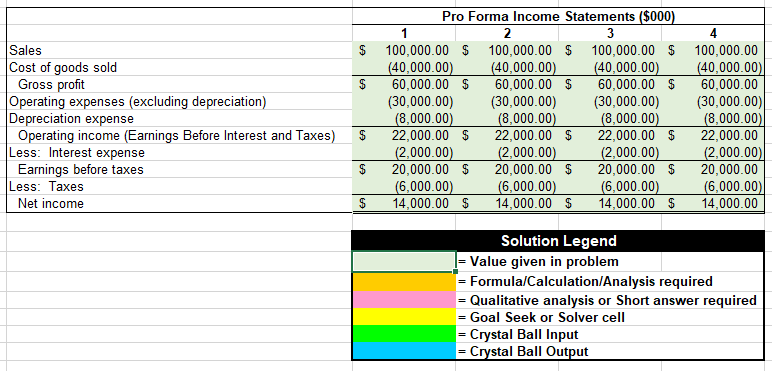
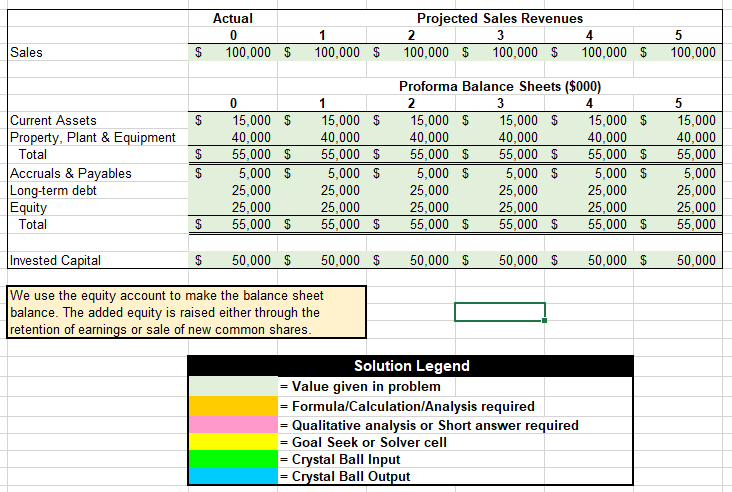
Please use the provided template to solve the problem and please show work / formula of working cell.
Please use the provided template to solve the problem and please show work / formula of working cell.
Please use the provided template to solve the problem and please show work / formula of working cell.
9-4 ENTERPRISE VALUATION-TRADITIONAL WACC MODEL Canton Corporation is a privately owned firm that engages in the production and sale of industrial chemicals, primarily in North America. The firm's primary product line consists of organic solvents and intermediates for pharmaceutical, agricultural, and chemical products . Canton's managers have recently been considering the possibility of taking the company public and have asked the firm's investment banker to perform some preliminary analysis of the value of the firm's equity. To support its analysis, the investment banker has prepared pro forma financial statements for each of the next four years under the (simplifying) assumption that firm sales are flat i.e., have a zero rate of growth), the corporate tax rate equals 30%, and capital expenditures are equal to the estimated depreciation expense. Canton Corporation Financials Pro Forma Balance Sheets ($000) 0 1 2 3 4 Current assets $ 15,000 $ 15,000 $15,000 $15,000 $ 15,000 Property, plant, and equipment 40,000 40,000 40,000 40,000 40.000 Total $ 55,000 S $ 55,000 $ 55,000 $ 55,000 $ 55,000 Accruals and payables $ 5,000 $ 5,000 $ 5,000 $ 5,000 $ 5,000 Long-term debt 25,000 25,000 25,000 25,000 25,000 Equity 25.000 25,000 25.000 25,000 25,000 Total S 55,000 $ 55,000 $ 55,000 $ 55,000 $ 55,000 0 Pro Forma Income Statements (5000) 1 2 3 4 $ 100,000 $ 100,000 $ 100,000 $ 100,000 (40,000) (40,000) (40,000) (40,000) $ 60,000 $ 60,000 $ 60,000 $ 60,000 (30,000) (30,000) (8,000) Sales Cost of goods sold Gross profit Operating expenses (excluding depreciation) Depreciation expense Operating income earnings before interest and taxes) Less: interest expense Earnings before taxes Less: taxes Net income (30,000) (8,000) $ 22,000 (8,000) (30,000) (8,000) $ 22,000 $ 22,000 $ 22,000 (2.000) (2,000) $ 20,000 $ 20,000 (6,000) (2.000) $ 20,000 (6,000) ( $ 14,000 (2,000) $ 20,000 (6,000) $ 14,000 (6,000) $ 14,000 $ 14,000 In addition to the financial information on Canton, the investment banker has as- sembled the following information concerning current rates of return in the capital market: The current market rate of interest on ten-year Treasury bonds is 7%, and the mar- ket risk premium is estimated to be 5%. Canton's debt currently carries a rate of 8%, and this is the rate the firm would have to pay for any future borrowing as well. Using publicly traded firms as proxies, the estimated equity beta for Canton is 1.60. a. What is Canton's cost of equity capital? What is the after-tax cost of debt for the firm? b. Calculate the equity free cash flows for Canton for each of the next four years. Assuming that equity free cash flows are a level perpetuity for year 5 and beyond, estimate the value of Canton's equity. (Hint: Equity value is equal to the present value of the equity free cash flows discounted at the levered cost of equity.) If the market rate of interest on Canton's debt is equal to the 8% coupon, what is the cur- rent market value of the firm's debt? What is the enterprise value of Canton? (Hint: Enterprise value can be estimated as the sum of the estimated values of the firm's interest-bearing debt plus equity.) c. Using the market values of Canton's debt and equity calculated in Problem 9-5(b), calculate the firm's after-tax weighted average cost of capital. Hint: ) Cost of Tax Debt Value kwacc = 1 - Debt Rate Enterprise Value Cost of Equity Value Levered Equity Enterprise Value d. What are the FCFs for Canton for years 1 through 4? e. Estimate the enterprise value of Canton using the traditional WACC model. Base your estimate on your previous answers, and assume that the FCFs after year 4 are a level perpetuity equal to the year 4 FCF. How does your estimate compare to your earlier estimate using the sum of the values of the firm's debt and equity? f. Based on your estimate of enterprise value, what is the value per share of equity for the firm if the firm has 2 million shares outstanding? Remember that your calculations up to this point have been in thousands of dollars. Given Debt beta Levered equity beta Market Risk Premium Risk free rate Borrowing rate (before tax) Number of common shares |Tax rate 0.20 1.60 5% 7% 8% 2,000 30% Solution Legend - Value given in problem = Formula/Calculation/Analysis required = Qualitative analysis or Short answer required = Goal Seek or Solver cell = Crystal Ball Input = Crystal Ball Output 8.00% 0.2 Solution a. What is Canton's cost of equity capital? What is the after-tax cost of debt for the firm? After-tax cost of debt Levered cost of equity b. Calculate the equity free cash flows for Canton for each of the next four years. Years 1 2 3 4 Sales $ 100,000.00 S 100,000.00 $ 100,000.00 $ 100,000.00 Operating income (Earnings Before Interest and Taxes 22,000.00 22.000.00 22.000.00 22,000.00 Less: Cash tax payments Net operating profits after taxes (NOPAT) Plus: Depreciation expense $ 8,000.00 $ 8,000.00 S 8,000.00 $ 8,000.00 Less: Investments in Net Working Capital in new Capital (CAPEX) Firm free cash flow (FCF) Equity Free Cash Flow Calculation (Firm) Free Cash Flow Less: Interest x (1 - Tax Rate) (Equity) Free Cash Flow Debt Valuation Present value of interest for Years 1-4 Present value of principal in Year 4 Debt Value Equity Valuation Present value of EFCFs for Years 1-4 Present value of EFCFs for Years 5 and beyond Equity Value Enterprise Value = Debt value + Equity value Product c. Using the market values of Canton's debt and equity and the after-tax cost of capital calaulate its WACC Market Value Proportion After-Tax Cost Long-term Debt Equity Total d. What are the firm free cash flows for Canton for years 1-4? See the answer to part b above. e. Estimate the enterprise value of Canton using the Traditional WACC method. Present value of firm free cash flows: Planning horizon (4 years) Residual value In year 4 Today Enterprise Value = Value of invested capital 25,000.00 f. What is the value per share of equity for Canton? Enterprise Value Less: Debt Equals: Shareholder value No. of shares (000) Value per share 2.000 $ Sales Cost of goods sold Gross profit Operating expenses (excluding depreciation) Depreciation expense Operating income (Earnings Before Interest and Taxes) Less: Interest expense Earnings before taxes Less: Taxes Net income Pro Forma Income Statements ($000) 2 3 100,000.00 $ 100,000.00 $ 100,000.00 $ 100,000.00 (40,000.00) (40,000.00) (40,000.00) (40,000.00) 60,000.00 $ 60,000.00 $ 60,000.00 $ 60,000.00 (30,000.00) (30,000.00) (30,000.00) (30,000.00) (8,000.00) (8,000.00) (8,000.00) (8,000.00) 22,000.00 $ 22,000.00 $ 22,000.00 $ 22,000.00 (2,000.00) (2,000.00 (2,000.00) (2,000.00 20,000.00 $ 20,000.00 $ 20,000.00 $ 20,000.00 (6,000.00) (6,000.00) (6,000.00) (6,000.00) 14,000.00 $ 14,000.00 $ 14,000.00 $ 14,000.00 $ $ Solution Legend Value given in problem Formula/Calculation/Analysis required = Qualitative analysis or Short answer required = Goal Seek or Solver cell = Crystal Ball Input Crystal Ball Output Actual 0 100,000 $ Projected Sales Revenues 2 3 4 100,000 $ 100,000 $ 100,000 $ Sales $ 100,000 $ 100,000 $ Current Assets Property, Plant & Equipment Total Accruals & Payables Long-term debt Equity Total $ $ 0 15,000 $ 40,000 55,000 $ 5,000 $ 25,000 25,000 55,000 $ 1 15,000 $ 40,000 55,000 $ 5,000 $ 25,000 25,000 55,000 $ Proforma Balance Sheets ($000) 2 3 4 15,000 $ 15,000 $ 15,000 $ 40,000 40,000 40,000 55,000 $ 55,000 $ 55,000 $ 5,000 $ 5,000 $ 5,000 $ 25,000 25,000 25,000 25,000 25,000 25,000 55,000 $ 55,000 $ 55,000 $ 5 15,000 40,000 55,000 5,000 25,000 25,000 55,000 $ Invested Capital $ 50,000 $ 50,000 $ 50,000 $ 50,000 $ 50,000 $ 50,000 We use the equity account to make the balance sheet balance. The added equity is raised either through the retention of earnings or sale of new common shares. Solution Legend = Value given in problem = Formula/Calculation/Analysis required = Qualitative analysis or Short answer required Goal Seek or Solver cell = Crystal Ball Input = Crystal Ball Output 9-4 ENTERPRISE VALUATION-TRADITIONAL WACC MODEL Canton Corporation is a privately owned firm that engages in the production and sale of industrial chemicals, primarily in North America. The firm's primary product line consists of organic solvents and intermediates for pharmaceutical, agricultural, and chemical products . Canton's managers have recently been considering the possibility of taking the company public and have asked the firm's investment banker to perform some preliminary analysis of the value of the firm's equity. To support its analysis, the investment banker has prepared pro forma financial statements for each of the next four years under the (simplifying) assumption that firm sales are flat i.e., have a zero rate of growth), the corporate tax rate equals 30%, and capital expenditures are equal to the estimated depreciation expense. Canton Corporation Financials Pro Forma Balance Sheets ($000) 0 1 2 3 4 Current assets $ 15,000 $ 15,000 $15,000 $15,000 $ 15,000 Property, plant, and equipment 40,000 40,000 40,000 40,000 40.000 Total $ 55,000 S $ 55,000 $ 55,000 $ 55,000 $ 55,000 Accruals and payables $ 5,000 $ 5,000 $ 5,000 $ 5,000 $ 5,000 Long-term debt 25,000 25,000 25,000 25,000 25,000 Equity 25.000 25,000 25.000 25,000 25,000 Total S 55,000 $ 55,000 $ 55,000 $ 55,000 $ 55,000 0 Pro Forma Income Statements (5000) 1 2 3 4 $ 100,000 $ 100,000 $ 100,000 $ 100,000 (40,000) (40,000) (40,000) (40,000) $ 60,000 $ 60,000 $ 60,000 $ 60,000 (30,000) (30,000) (8,000) Sales Cost of goods sold Gross profit Operating expenses (excluding depreciation) Depreciation expense Operating income earnings before interest and taxes) Less: interest expense Earnings before taxes Less: taxes Net income (30,000) (8,000) $ 22,000 (8,000) (30,000) (8,000) $ 22,000 $ 22,000 $ 22,000 (2.000) (2,000) $ 20,000 $ 20,000 (6,000) (2.000) $ 20,000 (6,000) ( $ 14,000 (2,000) $ 20,000 (6,000) $ 14,000 (6,000) $ 14,000 $ 14,000 In addition to the financial information on Canton, the investment banker has as- sembled the following information concerning current rates of return in the capital market: The current market rate of interest on ten-year Treasury bonds is 7%, and the mar- ket risk premium is estimated to be 5%. Canton's debt currently carries a rate of 8%, and this is the rate the firm would have to pay for any future borrowing as well. Using publicly traded firms as proxies, the estimated equity beta for Canton is 1.60. a. What is Canton's cost of equity capital? What is the after-tax cost of debt for the firm? b. Calculate the equity free cash flows for Canton for each of the next four years. Assuming that equity free cash flows are a level perpetuity for year 5 and beyond, estimate the value of Canton's equity. (Hint: Equity value is equal to the present value of the equity free cash flows discounted at the levered cost of equity.) If the market rate of interest on Canton's debt is equal to the 8% coupon, what is the cur- rent market value of the firm's debt? What is the enterprise value of Canton? (Hint: Enterprise value can be estimated as the sum of the estimated values of the firm's interest-bearing debt plus equity.) c. Using the market values of Canton's debt and equity calculated in Problem 9-5(b), calculate the firm's after-tax weighted average cost of capital. Hint: ) Cost of Tax Debt Value kwacc = 1 - Debt Rate Enterprise Value Cost of Equity Value Levered Equity Enterprise Value d. What are the FCFs for Canton for years 1 through 4? e. Estimate the enterprise value of Canton using the traditional WACC model. Base your estimate on your previous answers, and assume that the FCFs after year 4 are a level perpetuity equal to the year 4 FCF. How does your estimate compare to your earlier estimate using the sum of the values of the firm's debt and equity? f. Based on your estimate of enterprise value, what is the value per share of equity for the firm if the firm has 2 million shares outstanding? Remember that your calculations up to this point have been in thousands of dollars. Given Debt beta Levered equity beta Market Risk Premium Risk free rate Borrowing rate (before tax) Number of common shares |Tax rate 0.20 1.60 5% 7% 8% 2,000 30% Solution Legend - Value given in problem = Formula/Calculation/Analysis required = Qualitative analysis or Short answer required = Goal Seek or Solver cell = Crystal Ball Input = Crystal Ball Output 8.00% 0.2 Solution a. What is Canton's cost of equity capital? What is the after-tax cost of debt for the firm? After-tax cost of debt Levered cost of equity b. Calculate the equity free cash flows for Canton for each of the next four years. Years 1 2 3 4 Sales $ 100,000.00 S 100,000.00 $ 100,000.00 $ 100,000.00 Operating income (Earnings Before Interest and Taxes 22,000.00 22.000.00 22.000.00 22,000.00 Less: Cash tax payments Net operating profits after taxes (NOPAT) Plus: Depreciation expense $ 8,000.00 $ 8,000.00 S 8,000.00 $ 8,000.00 Less: Investments in Net Working Capital in new Capital (CAPEX) Firm free cash flow (FCF) Equity Free Cash Flow Calculation (Firm) Free Cash Flow Less: Interest x (1 - Tax Rate) (Equity) Free Cash Flow Debt Valuation Present value of interest for Years 1-4 Present value of principal in Year 4 Debt Value Equity Valuation Present value of EFCFs for Years 1-4 Present value of EFCFs for Years 5 and beyond Equity Value Enterprise Value = Debt value + Equity value Product c. Using the market values of Canton's debt and equity and the after-tax cost of capital calaulate its WACC Market Value Proportion After-Tax Cost Long-term Debt Equity Total d. What are the firm free cash flows for Canton for years 1-4? See the answer to part b above. e. Estimate the enterprise value of Canton using the Traditional WACC method. Present value of firm free cash flows: Planning horizon (4 years) Residual value In year 4 Today Enterprise Value = Value of invested capital 25,000.00 f. What is the value per share of equity for Canton? Enterprise Value Less: Debt Equals: Shareholder value No. of shares (000) Value per share 2.000 $ Sales Cost of goods sold Gross profit Operating expenses (excluding depreciation) Depreciation expense Operating income (Earnings Before Interest and Taxes) Less: Interest expense Earnings before taxes Less: Taxes Net income Pro Forma Income Statements ($000) 2 3 100,000.00 $ 100,000.00 $ 100,000.00 $ 100,000.00 (40,000.00) (40,000.00) (40,000.00) (40,000.00) 60,000.00 $ 60,000.00 $ 60,000.00 $ 60,000.00 (30,000.00) (30,000.00) (30,000.00) (30,000.00) (8,000.00) (8,000.00) (8,000.00) (8,000.00) 22,000.00 $ 22,000.00 $ 22,000.00 $ 22,000.00 (2,000.00) (2,000.00 (2,000.00) (2,000.00 20,000.00 $ 20,000.00 $ 20,000.00 $ 20,000.00 (6,000.00) (6,000.00) (6,000.00) (6,000.00) 14,000.00 $ 14,000.00 $ 14,000.00 $ 14,000.00 $ $ Solution Legend Value given in problem Formula/Calculation/Analysis required = Qualitative analysis or Short answer required = Goal Seek or Solver cell = Crystal Ball Input Crystal Ball Output Actual 0 100,000 $ Projected Sales Revenues 2 3 4 100,000 $ 100,000 $ 100,000 $ Sales $ 100,000 $ 100,000 $ Current Assets Property, Plant & Equipment Total Accruals & Payables Long-term debt Equity Total $ $ 0 15,000 $ 40,000 55,000 $ 5,000 $ 25,000 25,000 55,000 $ 1 15,000 $ 40,000 55,000 $ 5,000 $ 25,000 25,000 55,000 $ Proforma Balance Sheets ($000) 2 3 4 15,000 $ 15,000 $ 15,000 $ 40,000 40,000 40,000 55,000 $ 55,000 $ 55,000 $ 5,000 $ 5,000 $ 5,000 $ 25,000 25,000 25,000 25,000 25,000 25,000 55,000 $ 55,000 $ 55,000 $ 5 15,000 40,000 55,000 5,000 25,000 25,000 55,000 $ Invested Capital $ 50,000 $ 50,000 $ 50,000 $ 50,000 $ 50,000 $ 50,000 We use the equity account to make the balance sheet balance. The added equity is raised either through the retention of earnings or sale of new common shares. Solution Legend = Value given in problem = Formula/Calculation/Analysis required = Qualitative analysis or Short answer required Goal Seek or Solver cell = Crystal Ball Input = Crystal Ball OutputStep by Step Solution
There are 3 Steps involved in it
Step: 1

Get Instant Access to Expert-Tailored Solutions
See step-by-step solutions with expert insights and AI powered tools for academic success
Step: 2

Step: 3

Ace Your Homework with AI
Get the answers you need in no time with our AI-driven, step-by-step assistance
Get Started


